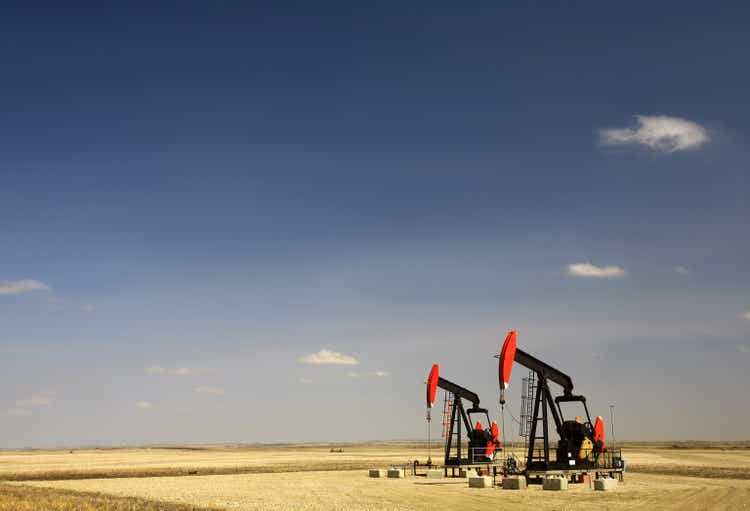ImagineGolf
Empire Petroleum (NYSE:EP) is attempting to scale up production, which will help with its competitiveness. Empire’s G&A expense (excluding stock-based compensation) was $14.32 per BOE during Q2 2022 and it should reduce this by $10+ to get this metric within range of other E&P companies.
Empire probably needs to get its production to 8,000+ BOEPD to reduce its G&A expense (per BOE) to a competitive level. It is making some progress in this area, but will probably exit 2022 closer to 3,000 BOEPD.
I’ve previously expressed my belief that Empire was overvalued compared to other E&P companies. Empire’s share price has come down around 30% since then, while it may also be able to increase its intrinsic value by growing production efficiently. Empire still appears to be overvalued based on my long-term oil pricing assumption of $75 WTI oil, but the valuation gap has closed somewhat now.
Attempting To Scale Up
Since Empire is now generating some positive cash flow, it can invest money to attempt to scale up its production. Empire’s general and administrative expense (excluding stock-based compensation) is currently very high (at $14.32 per BOE for Q2 2022) due to its relatively small scale. It will need to reduce this by $10+ per BOE to become competitive in the future. Reducing G&A expense by $10 per BOE would improve Empire’s margins by roughly the same amount as a $15 increase in benchmark oil prices.
Empire did increase its average daily oil production by approximately 6% from Q1 2022 to Q2 2022 as it spent $2 million on acquisitions and another $1 million on non-acquisition capex.
It is also investing $10 million in its Starbuck Field (North Dakota) asset with the goal of increasing production there by 500+ BOEPD by the end of the year.
Notes On Cash Flow
Empire Petroleum generated around $8 million in cash flow from operations in Q2 2022 while spending approximately $1 million in non-acquisition capex. This was with roughly $109 WTI oil during the quarter. Oil prices have come down a bit (with 2H 2022 WTI strip in the mid-$90s), but with the expected production growth Empire can probably generate approximately the same amount of cash flow from operations per quarter during the second half of the year.
Empire had $12 million in cash on hand at the end of Q2 2022. It may incur some cash burn due to its Starbuck Field investments as well as its non-operated D&C capex in Montana. However, its cash on hand should be sufficient to cover those investments.
Empire does need oil prices (and to a lesser extent gas prices) to remain quite strong over the next couple years so that it can significantly increase production with only a modest amount of cash burn. Empire estimated that its investments in non-operated wells in Montana were expected to achieve payback in under 12 months.
Notes On Valuation
Although Empire should make a fair bit of progress over the next little while in increasing production without taking on more debt, its share price still appears to be on the high side compared to other E&P companies.
A scenario where Empire doubles its production to approximately 4,300 BOEPD sometime in 2023 without incurring much additional debt may make it worth around $200 million at longer-term prices of $75 WTI oil and $4.00 NYMEX gas.
That would make it worth around $8 to $9 per share. Empire currently has around 21.6 million common shares outstanding and 25.6 million diluted common shares outstanding.
Conclusion
At under $15 per share, Empire is less overvalued than it was a few months ago. It appears capable of increasing production without taking on a lot of additional debt in the current commodity pricing environment. Continued efficient production growth will be important to getting its general and administrative expenses per BOE down to competitive levels. Empire will probably need to get production above 8,000 BOEPD to achieve this.
If Empire can grow production to around 4,300 BOEPD without borrowing additional money, then I’d value it at around $8 to $9 per share in a longer-term $75 WTI oil and $4.00 NYMEX gas environment.
Due to its cost structure, Empire remains vulnerable to a significant downturn in commodity prices. Empire’s combined production costs (excluding taxes) and cash G&A are currently over $40 per BOE. The current $90s WTI oil environment allows it to make investments to increase its production without incurring additional debt though.


Be the first to comment